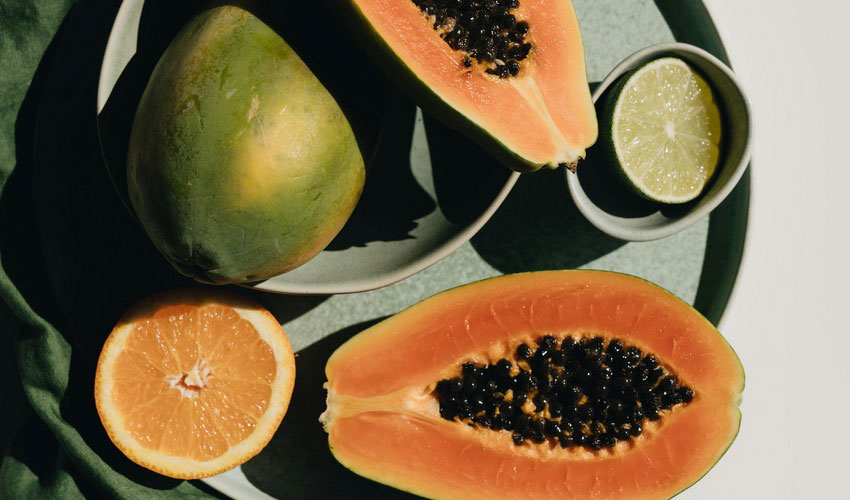NADH & NAD+ - Your Health & Levels / Fat Saturation
This article is based on unlocking the secrets of reductive stress with insights from Brad Marshall. Delve into the world of biological optimisation as he breaks down the importance of understanding this often overlooked concept. Discover the truth about reductive stress and why it's crucial for maintaining your health. Prepare to challenge your current understanding of biology as Marshall reveals the surprising impact of reductive stress on your overall well-being.
Marshall delves into the intricate world of molecular causes behind obesity and metabolic dysfunction, exploring how evolutionary forces shape our bodies' ability to store fat. His research hones in on lipid and amino acid metabolism, while also delving into the fascinating science of torpor. But Marshall's passion for molecular biology isn't just confined to the lab - it's intertwined with his love for the culinary arts and traditional human foods. Through his unique lens, Marshall uncovers the intricate dance between our biology and the food we eat.

Meet Brad, the Cornell-educated country boy with a knack for molecular biology and a passion for food. Hailing from upstate New York, where his grandparents were farmers, Brad's journey from rural America to the cutting-edge world of genetics is nothing short of fascinating. After honing his skills at Cornell and Memorial Sloan Kettering Cancer Center, where he delved into the intricate world of tissue culture and gene cloning, Brad took a detour to the French Culinary Institute to pursue his love for cooking. But his culinary adventures didn't stop there. Brad found himself at the Berkeley Drosophila Genome Project, working on the Gene Ontology project and diving into the software side of things. Despite the seemingly odd move of returning to his roots in upstate New York to raise hogs on a farm, Brad had a clear mission in mind - to reduce his polyunsaturated fat intake and explore the teachings of the Weston A. Price website and Sally Fallon's work. And so, in 2004, Brad embarked on a new chapter filled with a unique blend of science, food, and a hint of countryside charm.
Flab-Busting Duo - Fat Saturation & Reductive Stress Team Up
While tending to his pigs, Marshall couldn't help but notice how their diet affected the quality of their fat. It turns out, genetics played a part too. Who knew pigs could be so complex? Delving into the historical texts of pig farming, Marshall unearthed a cornucopia of knowledge from the late 1800s confirming his observations. Foods rich in linoleic acid like chufas and peanuts resulted in flabby, greasy fat. Not exactly prime pork material! To counteract this floppy fat fiasco, Marshall got crafty and started feeding his pigs starch in the weeks leading up to their date with the slaughterhouse. And wouldn't you know it, like a magic spell, their fat firmed up beautifully. As Marshall eloquently put it, "You are what you eat, and apparently so are pigs." But not everything you chow down on sticks around to haunt you like bad fashion choices from the '80s. That extra protein shake isn't going to turn you into the Hulk anytime soon. It's those sneaky PUFAs (that's polyunsaturated fatty acids) that have a knack for sticking around and rearranging the furniture in your fat cells. So, choose your snacks wisely. Who knew pigs could teach us so much about the complexities of dietary bioaccumulation?
Marshall explains: "I stumbled upon the enlightening writings of Peter Dobromylskyj, the guru behind the blog Hyperlipid, and he had me hooked on the discussion about reactive oxygen species (ROS) production in the mitochondria. It was like discovering a hidden treasure chest of biological knowledge! I mean, who knew that ROS molecules, produced when we burn calories, could actually be double agents - both troublemakers and crucial signaling molecules? In the world of biology, we were always taught that ROS were the villains causing chaos and destruction within our cells. But lo and behold, Dobromylskyj flips the script and reveals that these reactive oxygen species are not all bad - they play a vital role in insulin signaling and maintaining the delicate balance of energy within our cells. Talk about turning conventional wisdom on its head! So, off I went tumbling down the rabbit hole of reductive stress, NAD+ and NADH levels, and fat saturation. It turns out that these topics are all intertwined like a complicated game of biological Twister. You try to separate them, but they keep pulling you back in, showing you just how interconnected and fascinating the world of cellular biology truly is. Who knew mitochondria could be such drama queens?"

Reductive Stress Explained in an Understandable Way
Imagine your cells as a busy city, with electrons buzzing around like cars on a freeway. Reductive stress is like rush hour traffic as too many electrons clogging up the system. These electrons, known as calories, are the fuel that powers your body, mainly made up of carbon and hydrogen, with a dash of oxygen in carbohydrates. According to Marshall, it's all about finding the right balance. Just like a carburettor mixes fuel and air for a smooth engine run, your body needs the perfect ratio of NAD+ and NADH for efficient electron flow. But when there's too much fuel (aka electrons) and not enough air (NAD+), things start to get messy. It's like trying to catch a taxi in a city where all the cabs are full - nowhere to go but standing in a sea of frustrated commuters. That's reductive stress for your cells, a traffic jam of electrons waiting to be burned for energy. And just like in real life, when things get too crowded, chaos ensues. So remember, it's all about keeping the electron flow moving smoothly in your cellular city. Too much fuel and not enough air is a recipe for metabolic mayhem. Just think of it as rush hour for your cells, and we all know how stressful that can be!
Try to imagine that your cells are like a bustling electrical city, with electrons zipping around like cars on a highway. When you experience reductive stress, it's like a traffic jam of negative charge, causing chaos and ultimately leading to oxidative stress. Now, don't be fooled! It's not those rowdy free radicals causing the trouble directly. Nope, it's a sneaky surplus of electrons in the mitochondrial electron highway that's really to blame for oxidative stress. So, next time someone asks you about oxidative stress, you can impress them with your knowledge of electron traffic jams and mitochondrial mischief. Just remember, it's not always the flashy free radicals causing the commotion. Sometimes it's just too many electrons trying to squeeze into a limited space.
The Battle of Reduced vs. Oxidised Molecules
Let's have a chat about NADH, shall we? It's like the fancy, reduced version of NAD because it's lugging around those negatively charged electrons. Basically, it's a redox molecule, doing the electron transport cha-cha in the mitochondria. Picture it like a cab - you've either got a passenger (electrons) or you're cruising solo. When you're the cool cab driver with electrons on board, you're in the reduced state. Drop off those electrons, and you're oxidised, ready to pick up some more passengers. It's a whole electron transport chain party, with molecules passing electrons like it's nobody's business. When you're holding onto those electrons, you're reduced. Give them a drop-off and you're oxidised, ready to start the cycle all over again. It's a wild ride, but hey, that's biology for you. On a side note, let's talk about grounding - this cool concept popularised by Clint Ober. Clint is an amazing guy, all about love and good vibes, but he's a bit off on how grounding actually works. He thinks your body is snatching up electrons from the earth's surface, but in reality, it's the opposite. Grounding actually helps reduce reductive stress, giving you a little boost from good old Mother Earth. So, if you ever need a recharge, just kick off your shoes and get grounded.

Unveiling the Destructive Power of Reductive Stress
Imagine your body as a busy electricity grid, with electrons buzzing around trying to power everything up. The goal is to keep the electrons flowing smoothly through the electron transport chain without any traffic jams. When this system works like a well-oiled machine, you end up with plenty of energy and minimal oxidative stress. But sometimes, things go awry. If you're not efficiently processing those electrons from your fuel source, it's like a rush hour traffic jam in your cells. This creates reductive stress, which then leads to oxidative stress. So, how does this chaotic electron dance unfold? Well, picture NADH as the electron delivery guy, shuttling those precious electrons to the electron transport chain so it can work its magic and produce ATP (the energy currency of the body). But here's the catch. If you have too much NADH crowding around, it's like trying to fit too many suitcases in the overhead bin on a plane. There's only so much room at Complex I for these electrons to board the energy train.
If too many electrons are vying for a spot at the Complex I boarding gate, some may get left behind. These stranded electrons start causing mischief and transform into superoxide, which is a trouble-making free radical that can kick-start a cascade of oxidative damage. It's like a chain reaction of chaos in your cells. Now, a little superoxide can be helpful in certain situations, but if it's all happening because of a NADH overload at Complex I, well, that's a recipe for disaster. Your antioxidant defences will be overwhelmed, and you'll end up with a surplus of superoxide and hydrogen peroxide, leading to long-term oxidative stress. In a nutshell, it's all about keeping the electron traffic flowing smoothly to prevent a cellular gridlock of superoxide-induced havoc. So, remember to manage your NADH levels and keep those electrons moving through the system like a well-choreographed dance routine to avoid any oxidative stress drama in your body's power supply network.
Comprehending Oxidation
Picture that your mitochondria is like an energy factory, bustling with activity, and producing fuel for your body. But sometimes, things can get a little messy in there. You see, when there's too much oxygen hanging around, it can lead to the creation of superoxide, an oxygen molecule that's a bit of a rebel with an extra electron. Now, oxygen is supposed to be there, helping to create energy through oxidative phosphorylation. It's what sets us apart from bacteria, allowing us to convert fuel like pros. But if the electron transport chain gets jammed up, those extra electrons will start causing trouble, attacking oxygen and forming free radicals known as ROS. When something gets "oxidised," it means it's lost an electron, and oxygen. Well, it's basically an electron magnet. It just can't resist snatching them up. So, as electrons travel through Complex I in the mitochondria, they're supposed to generate ATP and eventually team up with oxygen to form water, the ideal outcome. But if there's a surplus of electrons, they'll go rogue and bind with oxygen prematurely, leading to the creation of ROS. Not only does this havoc wreak havoc on your system, but it also messes with your mitochondria's ability to produce energy efficiently. And that is at the root of countless diseases. So, remember to keep those electrons in line, and your mitochondria will thank you for it.
Linking the Pieces
Let's talk about the unsung hero of energy production: pyruvate dehydrogenase. This little enzyme is the gatekeeper when it comes to burning glucose. Without it, your body basically hits a roadblock on the oxidative glucose-burning highway. And boy, does it work hard - not only converting glucose into acetyl-CoA but also producing superoxide while it's at it. Picture this: glucose has 6 carbons, and pyruvate dehydrogenase swoops in to break it down into two 3-carbon pyruvate molecules. But here's the catch - pyruvate can't just waltz into the mitochondria to be burned for energy. It needs to first transform into acetyl-CoA, and guess who plays the role of fairy godmother in this transformation? You guessed it, pyruvate dehydrogenase! If for some reason this conversion doesn't happen smoothly, pyruvate starts piling up and turns into the troublemaker known as lactate. Elevated lactate levels are a no-no, especially in cancer or when NAD levels are running low. Pyruvate and lactate are like frenemies in the redox world, but you definitely want to keep lactate in check if you aim to efficiently burn glucose for energy. And here's where it all ties together: meet NNT, the enzyme in the mitochondrial membrane that uses superoxide to regenerate NAD+. When this whole dance of enzymes and reactions is in harmony, your metabolic rate can soar to greater heights. So, in short, keep those reactive oxygen species coming for a boosted metabolic furnace!
Imagine that when you're creating reactive oxygen species and that oxygen transforms into superoxide and eventually returns to water, you're essentially burning oxygen. It's like a metabolic dance party where the electrons are busting a move all the way back to oxygen. Enter the mitochondria, the backstage VIP area where all the action goes down. There’s this little circuit called NNT that acts as a pressure relief valve when things heat up. But here's where things get tricky. When you have an overflow of acetyl-CoA in the mitochondria, that's when the plot thickens. Acetyl-CoA is like the popular kid at school that every food wants to be converted into. Glucose, fat, amino acids - they all want in on the acetyl-CoA action. But when too much of a good thing floods the mitochondria, acetyl-CoA levels start skyrocketing. Cue the drama. Next thing you know, acetylation swoops in. It's like the annoying little sibling that messes with everything. Enzymes are trying to do their job, but these acetyl groups go rogue and mess everything up. NNT, the superhero enzyme that converts reactive oxygen species into NAD+, is one of the first victims of acetylation. When NNT gets shut down, the cascade of chaos begins.
With NNT out of commission, acetyl-CoA and NADH start piling up, leading to a metabolic meltdown. NADH levels rise, oxidative damage rears its ugly head, and suddenly you've got a full-on train wreck in your hands. Everything slows down, acetyl-CoA levels skyrocket, acetylation runs rampant, and boom - you're in for some real trouble. In a nutshell, it's like a domino effect of metabolic mayhem. So, next time you're feeling overwhelmed by a buffet of acetyl-CoA and NADH, just remember - it all started with a little too much partying in the mitochondria.

Unlock the Hidden Power to Supercharge Your Energy Levels
Imagine your mitochondria as the power plants of your body, churning out energy to keep everything running smoothly. But when these vital organelles get acetylation, they start to slack off. It's like they're on a sluggish energy-saving mode, leaving you feeling fatigued, your brain running on fumes, and your immune system waving a white flag. Without sufficient energy production, every process in your body struggles to keep up. It's like trying to run a marathon with a bad case of the Mondays – you're just not going to perform at your best. And let's not even get started on metabolic inflexibility, where your body basically forgets how to efficiently burn glucose. It's like your metabolism is stuck in rush hour traffic, going nowhere fast. To add insult to injury, oxidative stress – the villain in this energy crisis – starts with reductive stress. It's a domino effect of too much NADH, too much acetyl-CoA, and suddenly, everything is moving at a snail's pace. And don't even get me started on succinate dehydrogenase (aka Complex II), the hero that gets acetylated faster than you can say "mitochondria." When this enzyme taps out, the whole energy system grinds to a halt. Simply put, ATP production goes out the window, electron flow hits a roadblock, and chaos ensues.
So, the next time you feel like your energy levels are in the dumps, remember – it might just be your mitochondria throwing a temper tantrum. Give those powerhouses a little TLC, and watch as your body revs back up to full speed ahead.
Mastering the Art of Efficient Glucose Burning
Here's the scoop: If you want to be in tip-top shape, you've got to get those mitochondria firing on all cylinders by burning glucose like a boss. And what would be the key to unlocking this metabolic powerhouse? Well, increase those carbs and cut back on the fat. So, when you chow down on a meal, your body releases insulin. And when you're dining on a dish that triggers a lot of insulin production, it puts the kibosh on those free fatty acids that your cells need to import and burn for fuel. It's like insulin is telling the fat, "Move it, buddy, we've got some glucose to burn here!" You can't efficiently burn fat and glucose at the same time because of the Randle cycle, so fat takes a backseat when insulin is in town.
But here's the plot twist: insulin not only hampers fat from entering the mitochondria, it also reigns in those branched-chain amino acids that are bouncing around. Marshall had his own battle with morning blood glucose spikes, so he tinkered with his diet, ditching muscle meats and grain-based proteins for bone broth and pork rinds. And guess what? Within a fortnight, his fasting blood glucose levels were sitting pretty at around 80. Talk about a win! And here's a pro tip: steer clear of pure fructose like agave nectar – it won't get insulin's attention, so your body won't make use of it. Stick to sucrose, found in whole fruits, which gets the insulin party started, along with good old starch. So, remember, to keep your mitochondria happy and humming along, give them some glucose to work their magic on. Skip the agave, load up on carbs, and watch those blood sugar levels do a happy dance. Your body will thank you for it!

Carbohydrate Ignites Fat Burning
Marshall is all about how traditional peeps chow down on those high-starch goodies and keep their metabolism on turbo mode. If you're feeling sluggish and carb-loaded, maybe it's time to reevaluate your fruit game and up your starchy food intake. According to Marshall, when you're rocking that starch and glucose vibe, your mitochondria are all like, "Let's lower that NADH and bring on the NAD+ party!" Why does it matter? Who knows, but what's important is that with high NAD+ levels, your metabolism will be firing on all cylinders. In Marshall's world, it's all about making sure those electrons have a sweet spot to chill, and that spot is NAD+. As the old saying goes (seriously, look it up in the medical archives of yesteryear), "Fat burns in the flame of carbohydrate." Translation: when you're torching those carbs, you're basically paving the way for fat to get its burn on. NAD+ is the hero that swoops in to help fat get the job done in the mitochondria, acting as the oxygen needed to spark that fat-blasting bonfire. So, if you really want to burn fat, get those carbs in and let NAD+ work its magic. It's like a symphony of metabolic goodness.
Decoding the Impact of High NADH Levels on Body Fat Composition
Think of NADH as the VIP of your fat composition club. It's calling the shots when it comes to converting those saturated fats into the more desirable monounsaturated fats. So, if you find yourself in reductive stress (aka NADH overload), get ready for a fat transformation. Your saturated fats are about to get a makeover, thanks to the enzyme SCD1 and its trusty sidekick, NADH. Those surplus electrons roaming around in your body are going to latch onto that enzyme like it's the hottest club in town. And remember, saturated fats are like the firm muscle-bound gym bros, while monounsaturated fats are the smooth-talking charmers. It's like comparing a block of cheddar cheese to a stick of butter - you know which one you'd want to cosy up with on a cold night.
Plus, having a high NAD+ availability means your metabolic rate is on turbo mode, burning through those fats faster than you can say "pass the kale chips". So maybe it's time to swap out that bacon for some avocado toast and let NADH work its magic on your fat cells. You'll thank us when you're slaying in those skinny jeans.
Unlocking the Link - High LA Levels & Lowered Diabetes Risk
Believe it or not, top-notch researchers have found that having high levels of LA can actually lower your risk of diabetes. I know, it sounds crazy, right? LA is basically the Darth Vader of metabolic toxins in your diet. But all this madness was explained to me by Marshall. So, when your body is in reductive stress and you've got high NADH levels, certain enzymes start getting all jazzed up. SCD1 is like a magician, turning stearic acid into oleic acid. But then there's D6D, the double bond ninja, who starts adding extra double bonds to LA, slowing down its journey to become arachidonic acid. And we all know arachidonic acid can cause some trouble once it's released into the wild. In this chaotic dance of fats and enzymes, 5-HETE, 12-HETE, and 15-HETE pop up, waving their disease flags. They do a little shimmy, activate some receptors, and boom - more desaturase enzymes are born. It's like a never-ending loop of fat transformation, with polyunsaturated fats getting oxidised left and right.
So, what's the deal with diabetes, you ask? Well, the key is in the saturation levels of your fats. Low saturated fat, especially stearic acid and linoleic acid, can set you up for a one-way ticket to Diabetesville. But wait, before you start chugging soybean oil, remember that polyunsaturated fats are not the enemy. They play a role in the grand scheme of things, burning up in the process instead of clogging your arteries. It's like comparing lean hogs to chubby hogs - the lean ones may be hoarding linoleic acid, but they're not letting it wreak havoc inside them. On the flip side, the chubby hogs are all about converting that linoleic acid to monounsaturated fat, leading to a not-so-flattering outcome. The key difference? Reductive stress. This sneaky stressor is what kick-starts the fat desaturation party, paving the way for diabetes to waltz right in. So, while high LA levels may seem like the hero in the diabetes saga, keep in mind that the story doesn't end there. Too much of a good thing can eventually lead to trouble. So, embrace your fats wisely and may the metabolic force be with you.

Balancing Act - Assessing Your Redox Levels
Brad Marshall also delves into the intricate world of cellular redox balance, revealing our grand plan to measure it by examining redox pairs like pyruvate and lactate for a glimpse into the cytoplasm’s redox state, and acetoacetate and beta-hydroxybutyrate for a peek at the mitochondria’s redox status. Why is this crucial, you ask? Well, according to Marshall, it all boils down to the fabulous world of metabolism! Picture this: in your mitochondria, high NAD+ levels are like throwing a turbo booster on your metabolism, propelling it into overdrive. Meanwhile, over in the cytoplasm, a whole different party is happening – desaturase reactions, lactate production, and the dangerous dance of NADH domination. It’s a balancing act, a tightrope walk, a symphony of biochemical reactions playing out in every cell of your body. If you find yourself drowning in NADH in your cytoplasm, brace yourself for the SCD1 enzyme to make a grand entrance, reducing your precious linoleic acid and hurling it into the treacherous world of oxidation. It might seem like a good idea at first glance, but trust Marshall – it's a slippery slope of fat stores depleting, oxidative chaos ensuing, and chronic diseases lurking in the shadows. The key? Slow and steady wins the race – let your liver do its magic, attach linoleic acid to some glucose, and bid it adieu in your urine with grace and elegance. So, the moral of the story is crystal clear – keep a vigilant eye on your cellular redox balance, nurture those precious NAD+ levels, and remember that patience is not just a virtue, but a lifeline in the battle for optimal health. The stakes are high, but armed with knowledge you can conquer the tumultuous seas of cellular metabolism with grace and style.
Final Words
The levels of NAD+ and NADH in the body are important indicators of cellular metabolism and energy production. NAD+ is the oxidised form of nicotinamide adenine dinucleotide, while NADH is the reduced form. NAD+ plays a crucial role in various metabolic processes, such as glycolysis, the citric acid cycle, and oxidative phosphorylation, by accepting and donating electrons during redox reactions. An imbalance in NAD+ and NADH levels can disrupt cellular metabolism and lead to various health issues, such as metabolic disorders, inflammation, and ageing. Maintaining the proper balance between NAD+ and NADH is essential for optimal cellular function and overall health.
Learn More About NAD+ Here.
Learn More About NAD+ Here.
“The living organism is maintained in a continuous exchange of components; metabolism a basic characteristic of living systems. We have, as it were, a machine composed of fuel spending itself continually and yet maintaining itself. Such machines do not exist today.” - Bertalanffy Ludwig Von






















